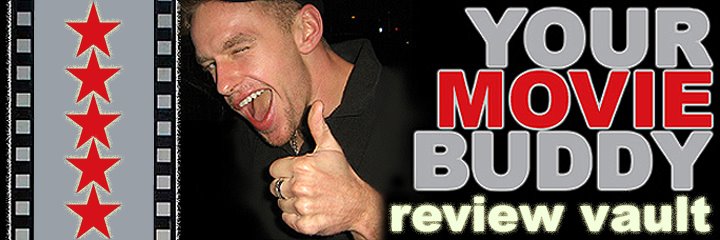4.5 stars (out of 5)
By R. Kurt Osenlund
One of the strongest cornerstones of American cinema is the gangster picture – morally challenging stories of morally depraved men who pursue (and often achieve) the American Dream via corruption, lies and murder. There's a wealth of dramatic allure to these stories, but even more conspicuous are the veritable riches they boast both on and off the screen. From “The Godfather” to “The Sopranos” (yes, I'm including HBO's sensational series in the mafia movie canon), we've seen mobsters gain affluence in their world (money, mansions, cars, casinos), and ours (Oscars, Golden Globes, Emmys, best-of-all-time lists). “Gomorrah,” a scary and scathing look at at a very real organized crime syndicate, turns this entire scenario on its head. First of all, it's not American, it's Italian, shot in the land and language from which many of the tales we know were born. Secondly, what's depicted and how it's depicted are anything but decadent. And as for off-screen glory*, “Gomorrah” wasn't nominated for any Oscars, didn't win any Golden Globes and isn't eligible for the Emmys, but it deserves a spot on those best-ever lists.

The title is indeed a nod to the biblical city of sin, but it's also a phonetic riff on the Camorra, a powerful underground criminal network in Naples that has its dirty hands in the world's drug trade, fashion industry and, like the Soprano clan, the all-too-appropriate waste management business. The organization's influence is felt worldwide – its revenue has even been legally reinvested into the reconstruction of the Twin Towers – and its history is blood-soaked and devastating. Check out these statistics: the Camorra is responsible for the deaths of roughly 4,000 people in the last 30 years (that's one every three days); its drug sales total approximately 400,000 euro per faction per day; and if the toxic waste barrels it illegally dumps were piled one on top of the other, the height would reach over 47,900 feet. “Gomorrah,” based on the 2006 book by 29-year-old investigative reporter Roberto Saviano (who's now in witness protection), illustrates these atrocities with frightful, no-frills realism. Daring director Matteo Garrone has no interest in high points or happy endings; he pulls us in, pulls the wool from our eyes and pries them open.
At 135 minutes, “Gomorrah” has an epic saga's running time to boot. The first 20-or-so of those minutes are a tad confusing, introducing the various fictional characters that will play out the factual events with a slow, stick-around-for-answers vibe. We're not quite sure how all the players – a money man who's sick of paying the family members of Family Members in prison; a 13-year-old, zit-faced boy who makes deliveries for the mob in his neighborhood; a pair of ambitious young punks whose discovery of an army's worth of weapons isn't the only thing that could get them killed; a tailor who works for a Camorra-owned dress manufacturer but secretly teaches his skills to the Chinese; and a silver-haired business exec who looks legitimate but deals in death, using a massive quarry as a depository for chemical waste that seeps into the ground and gives cancer to nearby residents – will factor into the big game, but Garrone is constantly providing immersive situations while the pieces gradually lock into place. Half the excitement of “Gomorrah” is figuring out where it's going, and I'd take its trickling narrative drip over the forced injection of something like “The International” any day of the week. (The best films hold you spellbound even when you're puzzled.)

Despite – or, I guess, due to – the fine work of a batch of screenwriters including Garrone, none of this feels scripted. There's not an ounce of forced or false dialogue, just the blistering conveyance of ugly truth. Nor does it feel acted; the cast is made up of naturally gifted amateurs and international stars like Italy's Toni Servillo, all of whom come off like documentary subjects. Much of that tone is a result of Garrone's directorial style, a fly-on-the-wall, observationist approach that drops us into the middle of a desolate land where gangsters are at war with each other and everyone is at risk. D.P. Marco Onorato's tirelessly curious hand-held camera peers around this minefield like a photojournalist on location, further implying that “Gomorrah” is a faithful adaptation of its source material. The movie isn't scored; the only music we ever hear is the occasional pop song and the only way we hear it is if it's played within a scene (in a car, in a club, on a stereo). As a final stamp of authenticity, Garrone throws in a slyly effective bit in which the two-timing tailor watches TV and sees Scarlett Johannson wearing his garment on the red carpet.
“Gomorrah” redefines the mob flick because it shows a criminal association not as it might be, but as it is. Still, Garrone isn't above giving a nod to his genre predecessors, namely Brian DePalma and his immortal Pacino vehicle, “Scarface.” The brief opening sequence has a tacky neon opulence reminiscent of the cult classic – even the title logo goes from red to “Vice City” pink – and, later, the delinquent duo play with empty pistols in an empty warehouse and pretend to be Tony Montana. What would Tony say if he saw “Gomorrah?” Fuhgeddaboutit? No way. Not this merciless movie. It sticks with you for days.
*Note: “Gomorrah” has collected a handful of accolades, including five European Film Awards, a Golden Satellite for Best Foreign Language Film and the coveted Grand Prix at the 2008 Cannes Film Festival. Its omission from this year's Academy Award nominees for Best Foreign Language Film is viewed by audiences, critics and insiders alike as a travesty. It opens at the Ritz at the Bourse in Philadelphia on Friday, Feb. 27.







